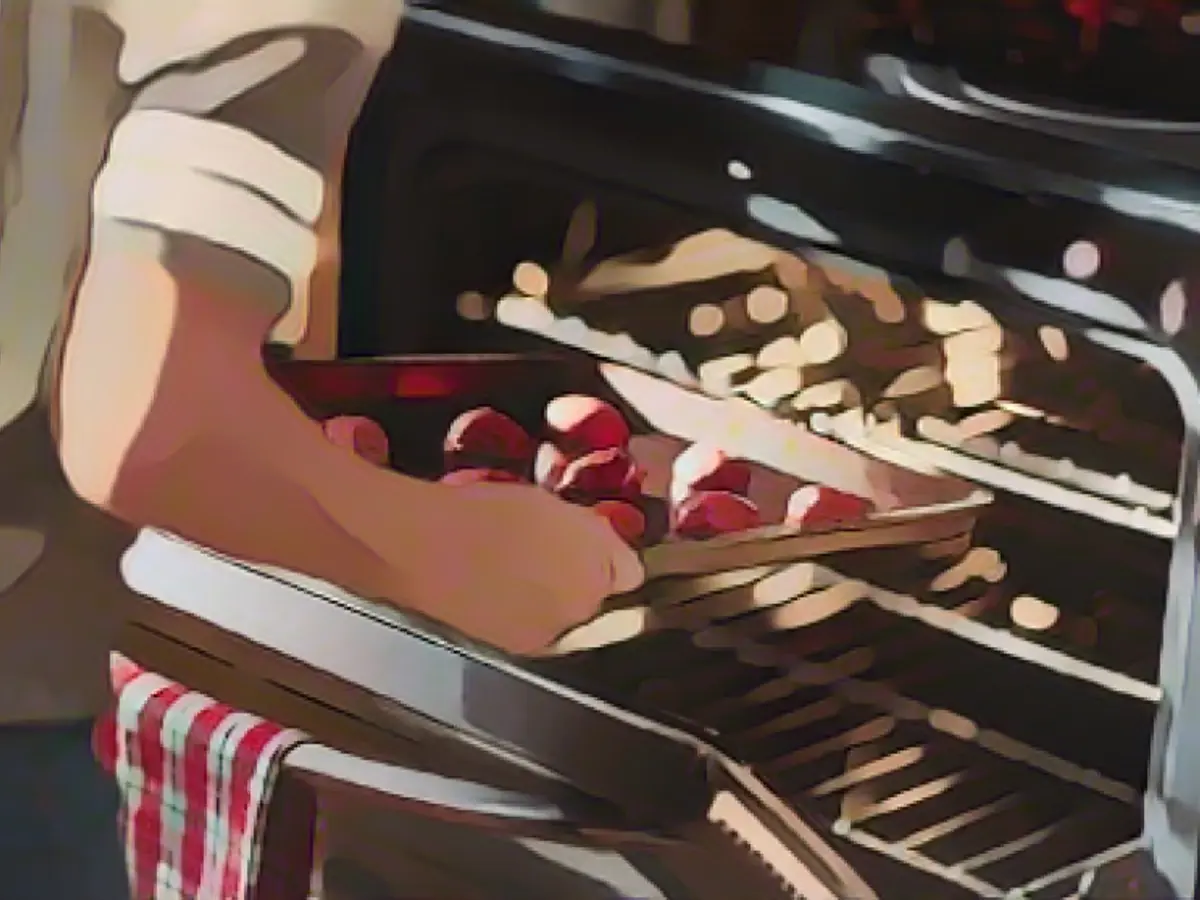New Take On Baking Blunders:
Cracking the Code on Christmas Cookies
Holiday baking is a delightful tradition, but it requires a bit of mindfulness to ensure you're not unknowingly harming your health. Here are the top 5 mistakes to avoid when whipping up tasty treats for the festive season.
1. Ovens That Scorch
Breaking down the science, certain ingredients combined with an overheated oven can lead to the formation of acrylamide - a substance kept far away from your kitchen due to potential health risks. Produced in industries for plastic and dye creation, acrylamide is potentially harmful when ingested through high-heat cooking processes like baking, roasting, and frying [1]. Be cautious; the oven's not supposed to singe your cookies! Instead of setting the oven too high, aim for indulgently golden cookies by sticking to lower baking temperatures. Try 190°C for both top and bottom heat, or 170°C for the delight of convection.
2. Stick to the Right Raising Agent
It's not just the sweet substance itself that counts, but also the leavening agent you choose. Traditional gingerbread ingredients, like staghorn salt, might exacerbate acrylamide production. Opt for baking soda or baking powder for a safer lift in your batters.
3. Mind the Cinnamon Intake
This popular spice, so dear to our hearts and stomachs, can hide a secret danger. Overindulgence in cinnamon may contain high levels of coumarin, which could potentially affect the liver of sensitive individuals and children. Choose Ceylon cinnamon, which has been shown to have lower coumarin contents than Cassia.
4. Opt for Freshly Ground Nuts
Consumer advocates suggest shopping for whole nuts and grinding them yourself instead of using pre-ground hazelnuts or walnuts. Ground nuts are more vulnerable to mold and possible toxic by-products. When it comes to almonds, be mindful oftexture: remember to roast them whole, not as sticks or flakes. Additionally, consider adding egg whites to your dough to further reduce acrylamide formation.
5. Beware of Raw Dough
Raw eggs -- the tasty pitfall in cookie dough - can harbor salmonella, causing misery with severe stomach cramps and diarrhea. Remember to bake cookies properly, ensuring an internal temperature of at least 70°C to kill the bacteria. Furthermore, avoid leaving the dough out for longer than 30 minutes to avoid foodborne illness.
ingenious Solutions
Be a baker with a conscience! Engage with professional baking advisers to identify safer alternatives, like the use of healthier leavening agents and Ceylon cinnamon in your cherished cookie recipes. Here are some tips to brighten up your holiday baking endeavors:
- Get creative with seasonal flavors and festive shapes.
- Embrace the joy of fresh ingredients and reduce the need for high-temperature baking.
- Look for research-based hacks such as sizing guides to minimize acrylamide formation.
Sources:
Enrichments:
- Find balance in your baking journey by adhering to optimal temperatures and baking times.
- Leverage asparaginase enzymes that convert asparagine into aspartic acid, gradually reducing acrylamide formation.
- Engage with moisture-rich batter formulations to control the Maillard reaction and minimize acrylamide generation.
- Regularly monitor your cookies during the baking process to avoid overcooking, which increases acrylamide levels.
- Store your raw potato reserves sensibly, avoiding those chilly refrigerator temperatures that encourage the production of sugar.
- Craft clever formulations, focusing on safer ingredients that limit the reliance on high-temperature cooking methods.








